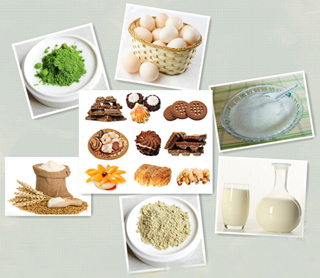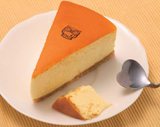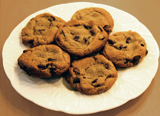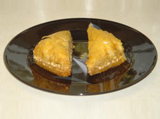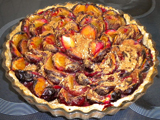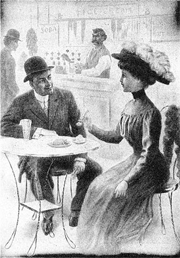
| v The food that composes the dessert course includes but is not limited to sweet foods. There is a wide variety of desserts in western cultures now including cakes, cookies, biscuits, gelatins, pastries, ice creams, pies, pudding, and candies. Fruit is also commonly found in dessert courses because of its natural sweetness. Many different cultures have their own variations of similar desserts around the world, such as in Russia, where many breakfast foods such as blint, oladi, and syrniki can be served with honey and jam to make them popular as desserts. The loosely defined course called dessert can apply to many foods. | ||||
| Ngredients Desserts usually contain sugar or a sweetening agent. Desserts contain a range of ingredients which makes the end product differ. Some of the more common ingredients in desserts are flour, dairy, eggs, and spices. Sugar gives many desserts their “addictive sweetness”.Sugar also contributes to the moistness of desserts and their tenderness. The flour or starch component in most desserts serves as a protein and gives the dessert structure. Different flours such as All-Purpose Flour or Pastry Flour provide a less rigid gluten network and therefore a different texture. Along with flour desserts may contain a dairy product. The extent to which dairy is used is based on the type of dessert. |
| |||
| Nutrition Desserts are by definition a sweet course. This usually means high content of sugar or fats. Desserts have historically been known as a smaller course to end a meal but in modern times they have become a more major part of people's diets. Although desserts are sweet a small amount of sugar is recommended in a daily diet.Certain desserts such as dark chocolate, that have a lower sugar content, are popularly considered healthier because of their other nutritional content. One example of a healthier dessert is fresh fruit cooked without sugars or extra fats. | ||||
| Varieties Dessert can come in variations of flavors, textures, and looks. Desserts can be defined as a usually sweeter course that concludes a meal. This definition includes a range of courses anywhere from fruits or dried nuts to multi-ingredient cakes and pies. With the many different varieties of desserts the many cultures have different variations. In modern times the variations of desserts have usually been passed down or come from geological regions. This is one cause for the variation of desserts. These are some major categories in which desserts can be placed. | ||||
| | | | | |
| Cakes- Cakes are sweet tender breads made with sugar and delicate flour. Cakes can vary from light, airy sponge cakes to dense cakes with less flour. In addition, small-sized cakes have become popular in the form of cupcakes and petits fours. Cookies- Cookies are similar to cakes (the word coming from the Dutch word “kowkje” meaning little cake). Historically cookies were small spoonfuls of cake batter placed in the oven to test the temperature. Cookies can come in many different forms. Examples include layered bars, crispy meringues, and soft chocolate chip cookies. Pastries- Pastries can either take the form of light and flaky bread with an airy texture or unleavened dough with a high fat content. Pastries can be eaten with fruits, chocolates, or other sweeteners. Pies- Pies and cobblers are a crust with a filling. The crust can be either made from either a pastry or crumbs. The fillings can be anything from fruits to puddings. | ||||
| History Desserts were first made using natural ingredients that were locally available.In ancient civilizations people enjoyed dried fruits, honeycomb, or nuts. These were considered the first candies. When sugar began to be manufactured in the Middle Ages more sweet desserts became available. Even then sugar was so expensive usually only the wealthy could indulge on special occasions. Ice cream can be dated back to 3000BC[citation needed] and may be considered to be the “dessert” in the modern sense of the word. The first apple pie recipe was printed in 1381. Also in 1740 the first cupcake recipes were recorded. Ice cream was a Chinese invention although Marco Polo expanded the technique to Europe in his travels. By the 1800s recipes for how to make ice cream were very popular. Vanilla also plays a large role many desserts including ice cream. Vanilla was mostly grown in Mexico where they discovered if the vanilla pod was picked and dried then vanillin was produced which can be sweetened into a dessert on its own. View more… | | |||
| Market The market for desserts has increased over the last few decades, which was greatly increased by the commercialism of baking desserts and the rise of food productions. Desserts are present in most restaurants as the popularity has increased. Also many commercial stores have been established as solely desserts stores. Ice cream parlors have been around since before 1800. Many businesses started advertising campaigns focusing solely on desserts. The tactics used to market desserts are very different depending on the audience for example desserts can be advertised with popular movie characters to target children.The rise of companies like Food Network has marketed many shows which feature dessert and their creation. Shows like these have displayed extreme desserts and made a game show atmosphere which made desserts a more competitive field. | ||||
